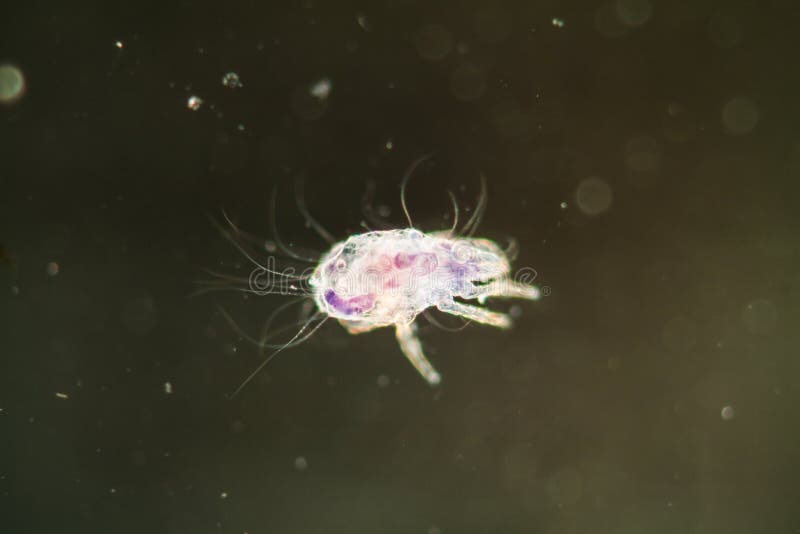Table Of Content

Shamiyeh et al. (1973) placed a 0.05 g sample of dust in 30 ml of a saturated NaCl solution and added 5 drops of detergent. The dust was teased apart and subjected to ultrasonic treatment for 20 minutes. The suspension was rinsed through a 45 micron mesh sieve, stained with crystal violet and examined under a stereo microscope.
A Breath of Fresh Air in Your Inbox
Luckily, there are things you can do to reduce the risk of dust mites in your home. Fortunately, there are several methods for how to get rid of dust mites in clothes, carpets, and more. It's important to note that getting rid of dust mites is an ongoing process.
Asthma
Does Making Your Bed Worsen Dust Mite Allergy Symptoms? - POPSUGAR
Does Making Your Bed Worsen Dust Mite Allergy Symptoms?.
Posted: Tue, 12 Mar 2024 07:00:00 GMT [source]
These observations are similar to previous studies that found increased IL-4 in 2- and 5-week HDM models17,23 and IL-13 mRNA levels after 2 weeks of HDM exposure17. In our models, expression of both mediators peaked at 2 weeks, with progressive decreases at 4 and 8 weeks of HDM exposure, which corresponds temporally with the progressive increase in airways inflammation and airway remodeling. In this paper, we describe two 4-week models of HDM-induced allergic airways inflammation using a lower (10 µg) and higher (25 µg) dose of Dermatophagoides pteronyssinus, and compare the phenotypic features to 2- and 8-week HDM models22. We found that 4 weeks of intranasal exposure to 25 µg HDM daily during the week, resulted in AHR, airways inflammation and remodeling with collagen deposition, which were comparable to the 8-week HDM-sensitization and -challenge model. We propose that this 4-week model is a suitable model of chronic allergic airways remodeling that offers significant advantage over the 8-week model due to the economy of time and resource utilization. Vacuuming and cleaning activities have not shown much benefit in reducing mite populations, or removing their allergenic materials (feces, cast skins, carcasses).

Reduce Clutter

However, an allergic reaction to these pesky creatures may induce skin rashes. “However, most patients develop their allergies during childhood or adolescence. It is a combination of genetics and exposure that leads to allergic sensitisation.” This refers to the development of antibodies to allergens that are ingested, absorbed or inhaled. That is why the change in season from dry to wet, such as spring, tends to be a problem in the city, Wu says. Going from wet to dry in the autumn can also be a problem, since the dust mite allergens accumulated during the humid season dry up and become fine dust.
Dubious dust mite treatments
The dust mites are cosmopolitan members of the mite family Pyroglyphidae. Dust mites are prevalent in most homes, so regular cleaning and other preventive measures are key to stopping their large numbers while also alleviating your allergies. Depending on the severity of your dust mite allergies, this condition may also trigger asthma. Wu, who used to suffer from asthma and rhinitis, desensitised himself and no longer struggles with allergies. Desensitisation, or allergen immunotherapy, he explains, “can reduce or eliminate allergic sensitivities leading to long-term improvement”. An HVAC system is the first line of defense against indoor dust.
Plush rugs and carpet provide a soft spot to land when you get out of bed in the morning, but did you know your flooring choices might actually be contributing to dust allergies? If possible, opt for hard floors and rely on washable rugs to keep your feet warm. If you must have carpet in some areas of the house, be sure to clean it regularly and vacuum as often as possible. Weekly loads of laundry are sufficient for many households, but if you suspect a dust mite infestation or are prone to allergy symptoms, take it up a notch. Wash linens more frequently and always on the hottest water setting (if the material allows).
If you live on a busy street with traffic or near a factory or mine, you will likely experience more dust than homes without these factors. The best solution is to seal windows and doors or other cracks and crevices that are possible dust entryways. Regularly washing carpets, textiles, and stuffed animals, as well as cleaning garages and attics, can go a long way.
Where does it live?
Treatment of the premises with either of these chemicals should be considered only as a supplement to more important allergy-reducing measures, such as encasement of bedding and removal of dust-laden furnishings. Dust in homes means dust mites are likely present, though invisible to the naked eye. These mites feed on skin flakes but are harmless and don't spread disease. They don't bite as head lice and bed bugs do, but their droppings can worsen allergies and asthma.
Be methodical, avoiding clean surfaces once your mop or cloth is dirty. Take the mop head or cloth outside to shake out the dust if possible, or add it right to the wash. Do so carefully, so you don't accidentally shake out any dust back into your home.
Models that also exhibit airway remodeling, a key feature of asthma, in addition to AHR and airway inflammation typically require 5–12 weeks to develop. We found that 4 weeks of intranasal HDM (25 µg in 35 µl saline; 5 days/week) resulted in AHR, airway inflammation and airway remodeling that were comparable to the 8-week model. Our survey of inflammatory responses revealed differences in the patterns of leukocyte recruitment to the airways, IgE response and inflammatory mediator expression amongst the different HDM protocols.
Abstract - Mauter - Ohio Wesleyan University
Abstract - Mauter.
Posted: Thu, 19 Oct 2023 09:39:05 GMT [source]
Even minor congestion, sneezing, or itchy eyes can disrupt sleep—because, remember, thousands of them are likely living in your mattress—and negatively impact your day-to-day wellbeing. Now, that doesn’t exactly make me feel better, but Stuczen explains that Dyson takes studying dust and dust mites very seriously. Their lab houses a farm which allows microbiologists to collect mite feces and learn more about the allergens they produce. They’ve also been conducting an annual Global Dust Study since 2021 to explore the effect that dust has on our health and well-being.
The neutrophil mediators CXCL-1 and IL-17A were highest at 2 weeks, consistent with the observation that neutrophilic inflammation begins very early, and with observations made in other 2-week HDM-exposure models17,23. We also observed significant increases in IL-6 and eotaxin-1 in the 2-week HDM model, although eosinophil recruitment to the airways was not statistically significant, despite a 5.6-fold increase relative to Saline controls. Our 2-week protocol consisted of daily exposures to 100 µg HDM (i.n.) from days 1–5, followed by a single i.n. Exposure to 100 µg HDM on day 11, and endpoint assessment on day 12.
Our beds are just as warm and cozy for dust mites as they are for us, thanks to all the skin flakes they can feed on. This is why changing bed linens frequently and cleaning the bedding properly is important for dust mite control. If you suspect that you may have dust mite allergy, take steps to reduce house dust, particularly in your bedroom.
Lastly, Gagliardi advises emptying the canister or switching out the filter bag outdoors. After all that hard work, you want to avoid re-introducing dust to any areas you just cleaned. Most people assume vacuuming is the easiest way to get rid of dust. However, some vacuum cleaners release excess dust and contaminants into the air, making your home feel dustier after you’ve cleaned.
In severe cases, the condition may be ongoing (chronic), resulting in persistent sneezing, cough, congestion, facial pressure, an eczema flare-up or severe asthma attack. If you have continuous allergy symptoms throughout the year, it may be worth talking to a doctor about possible dust mite allergies. While difficult to get rid of completely, there are ways you can manage dust mite populations in your home while also treating your allergies. While these microscopic creatures resemble small bugs, dust mites don’t actually leave bites on your skin. You’re also more likely to have other allergy symptoms, such as sneezing and postnasal drip. The scientists who produced the map at the top of this post didn’t actually set out to study dust mites.
No comments:
Post a Comment